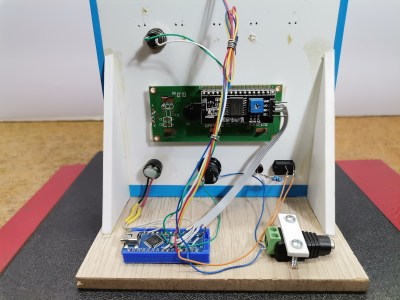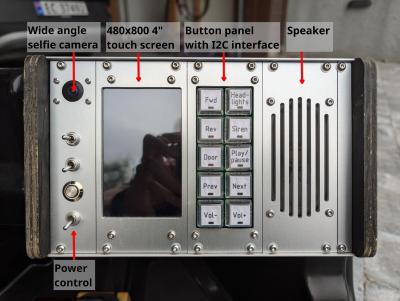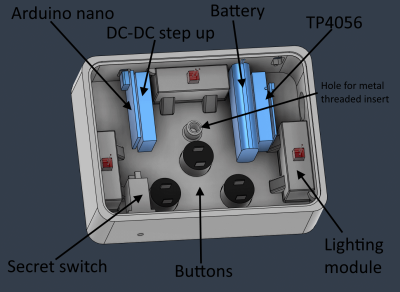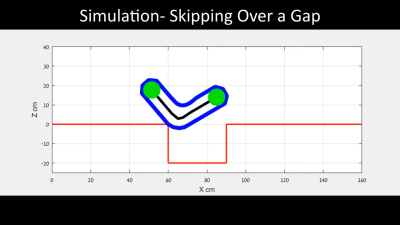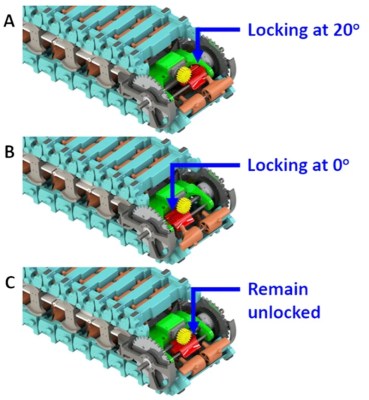If there’s a reason that fancy holographic displays that respond to gestures are a science fiction staple, it’s probably because our current display technology is terrible. Oh sure, Retina displays and big curved gaming monitors are things of wonder, but they’re also things that occupy space even when they’re off — hence the yearning for a display that can appear and disappear at need.
Now, we’re not sure if [Maker Mac70]’s floating display is the answer to your sci-fi dreams, but it’s still pretty cool. And, as with the best of tricks, it’s all done with mirrors. The idea is to use a combination of a partially reflective mirror, a sheet of retroreflective material, and a bright LCD panel. These are set up in an equilateral triangle arrangement, with the partially reflective mirror at the top. Part of the light from the LCD bounces off the bottom surface of the mirror onto a retroreflector — [Mac] used a sheet of material similar to what’s used on traffic signs. True to its name, the retroreflector bounces the light directly back at the semi-transparent mirror, passing through it to focus on a point in space above the whole contraption. To make the display interactive, [Mac] used a trio of cheap time-of-flight (TOF) sensors to watch for fingers poking into the space into which the display is projected. It seemed to work well enough after some tweaking; you can check it out in the video below, which also has some great tips on greebling, if that’s your thing.
We suspect that the thumbnail for the video is a composite, but that’s understandable since the conditions for viewing such a display have to be just right in terms of ambient light level and the viewer’s position relative to the display. [Mac] even mentions the narrow acceptance angle of the display, touting it as a potential benefit for use cases where privacy is a concern. In any case, it’s very different from his last sci-fi-inspired volumetric display, which was pretty cool too.
Continue reading “A Little Optical Magic Makes This Floating Display Pop”



